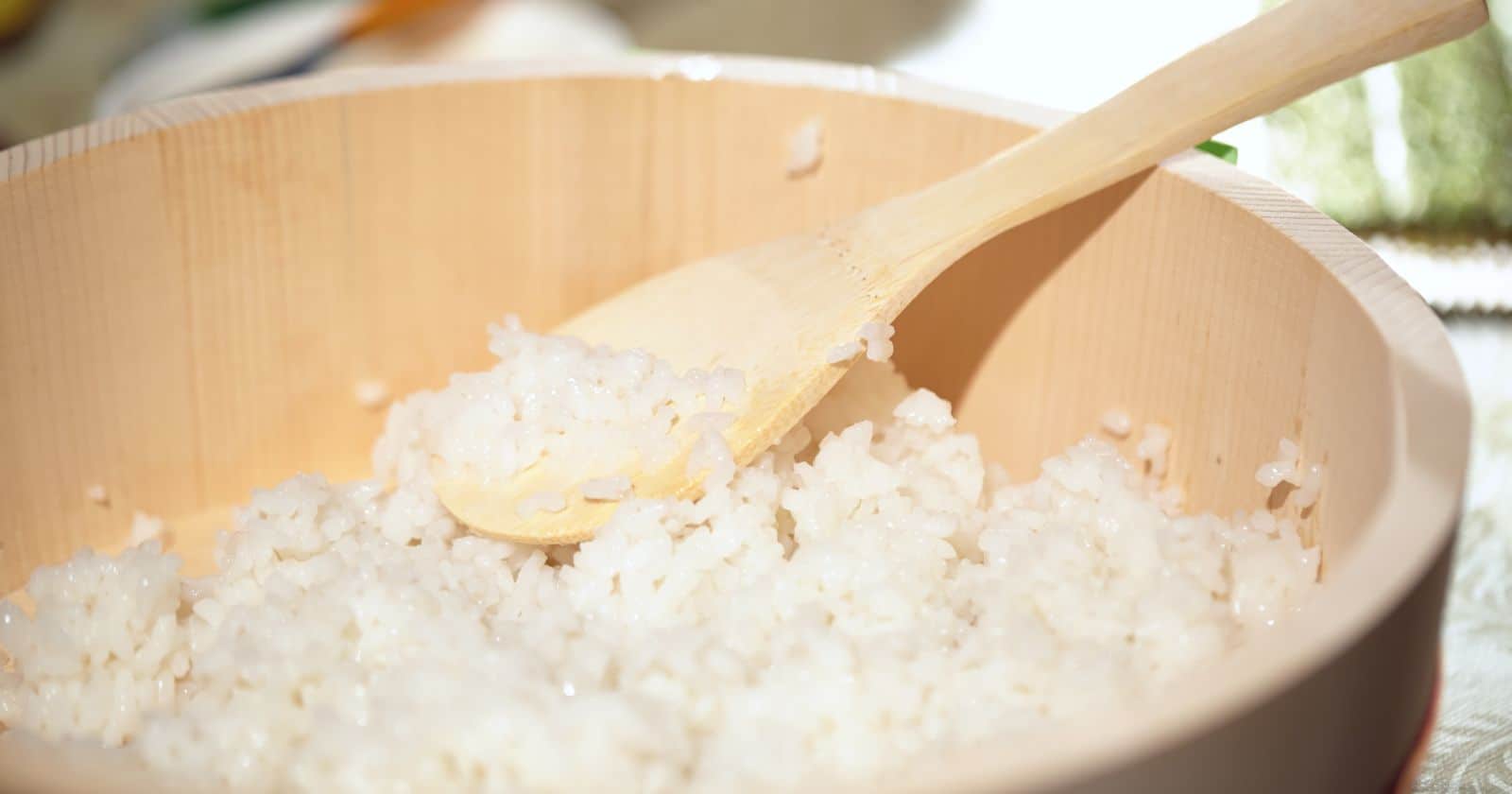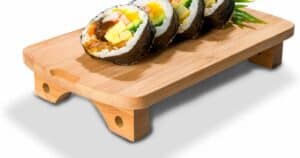Is sushi rice the same as white rice? The short answer is no, though they are both types of rice.
Hello, curious readers! If you’ve ever looked at a bowl of sushi rice next to plain white rice and wondered how they differ, you’ve come to the right place. As a food blogger and rice enthusiast, I’m here to give you the lowdown on these two common rices.
While sushi rice and white rice come from the same plant, there are some key differences that sets them apart:
- Sushi rice is a short-grain, starchy Japanese rice that becomes sticky when cooked. This allows it to bind together well for making sushi. White rice tends to have separate, fluffy grains after cooking.
- Sushi rice has a slightly sweet flavor thanks to the rice vinegar mixture added after cooking. White rice is milder in flavor.
- Despite having similar calories and nutrients, sushi rice rates higher on the glycemic index. This means it can spike blood sugar faster than white rice.
Curious to know more about sushi rice vs. regular white rice? Keep reading as I dive into the nitty-gritty details on the origins, nutrition, uses, and flavors of these two common rices. You’ll be a rice expert in no time. Let’s get rolling!
Sushi Rice Has a Stickier Texture
One of the biggest differences between sushi rice and white rice is the texture. Sushi rice is a short-grain Japanese rice variety that becomes very sticky and gluey when cooked. This allows it to bind together well and form the classic finger-shaped pieces for sushi.
On the other hand, white rice tends to have fluffy, separate grains after cooking. This dry, loose texture is great for dishes like rice pilaf or curry, where you want the rice to absorb flavors rather than clump together.
The stickiness in sushi rice comes from its higher starch content. The short-grain variety of rice used has more amylopectin starch which allows the grains to adhere to one another once cooked.
Sushi Rice Has a Sweet, Vinegary Flavor
In addition to differences in texture, sushi rice and white rice have distinct flavors:
- Sushi rice has a sweet, vinegary taste that comes from the rice vinegar mixture added after cooking. A blend of rice vinegar, sugar, and salt is blended into hot cooked sushi rice. This gives it a mild acidity and sweetness.
- White rice has a more neutral, bland flavor on its own. Its mild taste makes it suitable for pairing with strongly flavored curries, stir fries, and sauces.
The vinegar mixture enhances the natural sweetness of the short-grain rice. So sushi rice has a more complex, bright flavor compared to the plainness of white rice.
The Glycemic Index Varies Between Types
You might think sushi rice and white rice have similar nutritional values since they come from the same grain. But sushi rice actually rates higher on the glycemic index (GI), meaning it causes a faster spike in blood sugar after eating.
- Sushi rice has a GI of 73, which is considered a high GI food.
- White rice has a GI around 64, which lands in the medium GI range.
Despite having very similar calories and nutrients like carbohydrates, protein, and minerals, sushi rice impacts blood sugar faster. This is likely due to the sticky texture and added sugars from the vinegar mixture.
So if you’re looking for a rice with a slower glycemic impact, plain white rice is a better choice over sushi rice.
Cooking Methods Differ
Preparing sushi rice requires a specific process that differs from cooking regular white rice:
- Sushi rice is rinsed repeatedly to remove excess starch before cooking. This helps cut down on stickiness and improves the rice’s ability to absorb the vinegar flavoring.
- The rice is cooked with a bit less water than white rice, since the starch content requires less hydration. Too much water can make sushi rice mushy.
- After cooking, the hot rice is tipped into a mixing bowl and blended with the vinegar mixture. Gently folding helps distribute flavor and texture evenly across the grains.
- For white rice, rinsing is optional and it’s cooked with a bit more water. The plain cooked rice can be served immediately without adding other ingredients.
Best Uses Vary Between Types
Because of the differing textures and flavors, sushi rice and white rice aren’t interchangeable in recipes or dishes:
- Sushi rice is best used for sushi, rice balls, and other Japanese dishes where you want the rice to stick together. The sweet vinegar flavor also complements raw fish in sushi.
- White rice is ideal for rice pilaf, rice bowls, stir fries, and soups where you want fluffy, individual grains and a non-distracting flavor.
While both can be served as simple side dishes, sushi rice offers a more interesting eating experience thanks to its unique sticky, sweet-tangy qualities.
Time to Experience the Differences!
Now that you know the main distinctions between sushi rice and white rice, it’s time to try them out in your kitchen! Pick up some sushi rice and whip up homemade nigiri or maki rolls. Then make white rice pilaf or congee and taste the mild flavor and loose texture in contrast. Cooking and sampling these rice types yourself lets you fully appreciate their diversity.
With this guide, you now have the knowledge to select the right rice for your meal. Sushi rice brings sweet vinegar notes that pair beautifully with raw fish and Japanese flavors. White rice has a subtle flavor that complements all kinds of dishes without overpowering. So don’t assume all rice is the same—try out sushi rice vs. white rice to enjoy the unique textures and tastes of each.





